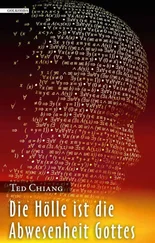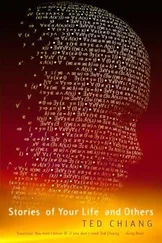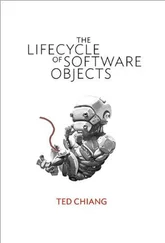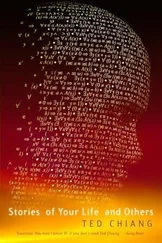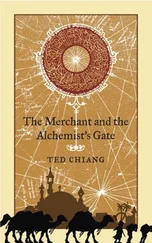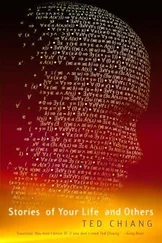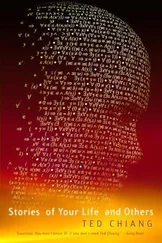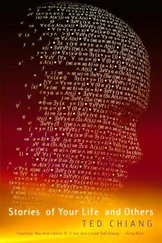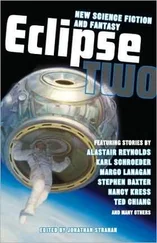Robert Stratton went on to read nomenclature at Cambridge’s Trinity College. There he studied kabbalistic texts written centuries before, when nomenclators were still called ba’alei shem and automata were called golem , texts that laid the foundation for the science of names: the Sefer Yezirah , Eleazar of Worms’ Sodei Razayya , Abulafia’s Hayyei ha-Olam ha-Ba . Then he studied the alchemical treatises that placed the techniques of alphabetic manipulation in a broader philosophical and mathematical context: Llull’s Ars Magna , Agrippa’s De Occulta Philosophia , Dee’s Monas Hieroglyphica .
He learned that every name was a combination of several epithets, each designating a specific trait or capability. Epithets were generated by compiling all the words that described the desired trait: cognates and etymons, from languages both living and extinct. By selectively substituting and permuting letters, one could distill from those words their common essence, which was the epithet for that trait. In certain instances, epithets could be used as the bases for triangulation, allowing one to derive epithets for traits undescribed in any language. The entire process relied on intuition as much as formulae; the ability to choose the best letter permutations was an unteachable skill.
He studied the modern techniques of nominal integration and factorization, the former being the means by which a set of epithets – pithy and evocative – were commingled into the seemingly random string of letters that made up a name, the latter by which a name was decomposed into its constituent epithets. Not every method of integration had a matching factorization technique: a powerful name might be refactored to yield a set of epithets different from those used to generate it, and those epithets were often useful for that reason. Some names resisted refactorization, and nomenclators strove to develop new techniques to penetrate their secrets.
Nomenclature was undergoing something of a revolution during this time. There had long been two classes of names: those for animating a body, and those functioning as amulets. Health amulets were worn as protection from injury or illness, while others rendered a house resistant to fire or a ship less likely to founder at sea. Of late, however, the distinction between these categories of names was becoming blurred, with exciting results.
The nascent science of thermodynamics, which established the interconvertibility of heat and work, had recently explained how automata gained their motive power by absorbing heat from their surroundings. Using this improved understanding of heat, a Namenmeister in Berlin had developed a new class of amulet that caused a body to absorb heat from one location and release it in another. Refrigeration employing such amulets was simpler and more efficient than that based on the evaporation of a volatile fluid, and had immense commercial application. Amulets were likewise facilitating the improvement of automata: an Edinburgh nomenclator’s research into the amulets that prevented objects from becoming lost had led him to patent a household automaton able to return objects to their proper places.
Upon graduation, Stratton took up residence in London and secured a position as a nomenclator at Coade Manufactory, one of the leading makers of automata in England.
Stratton’s most recent automaton, cast from plaster of Paris, followed a few paces behind him as he entered the factory building. It was an immense brick structure with skylights for its roof; half of the building was devoted to casting metal, the other half to ceramics. In either section, a meandering path connected the various rooms, each one housing the next step in transforming raw materials into finished automata. Stratton and his automaton entered the ceramics portion.
They walked past a row of low vats in which the clay was mixed. Different vats contained different grades of clay, ranging from common red clay to fine white kaolin, resembling enormous mugs abrim with liquid chocolate or heavy cream; only the strong mineral smell broke the illusion. The paddles stirring the clay were connected by gears to a drive shaft, mounted just beneath the skylights, that ran the length of the room. At the end of the room stood an automatous engine: a cast-iron giant that cranked the drive wheel tirelessly. Walking past, Stratton could detect a faint coolness in the air as the engine drew heat from its surroundings.
The next room held the molds for casting. Chalky white shells bearing the inverted contours of various automata were stacked along the walls. In the central portion of the room, apron-clad journeymen sculptors worked singly and in pairs, tending the cocoons from which automata were hatched.
The sculptor nearest him was assembling the mold for a putter, a broad-headed quadruped employed in the mines for pushing trolleys of ore. The young man looked up from his work. ‘Were you looking for someone, sir?’ he asked.
‘I’m to meet Master Willoughby here,’ replied Stratton.
‘Pardon, I didn’t realize. I’m sure he’ll be here shortly.’ The journeyman returned to his task. Harold Willoughby was a Master Sculptor First-Degree; Stratton was consulting him on the design of a reusable mold for casting his automaton. While he waited, Stratton strolled idly amongst the molds. His automaton stood motionless, ready for its next command.
Willoughby entered from the door to the metalworks, his face flushed from the heat of the foundry. ‘My apologies for being late, Mr. Stratton,’ he said. ‘We’ve been working toward a large bronze for some weeks now, and today was the pour. You don’t want to leave the lads alone at a time like that.’
‘I understand completely,’ replied Stratton.
Wasting no time, Willoughby strode over to the new automaton. ‘Is this what you’ve had Moore doing all these months?’ Moore was the journeyman assisting Stratton on his project.
Stratton nodded. ‘The boy does good work.’ Following Stratton’s requests, Moore had fashioned countless bodies, all variations on a single basic theme, by applying modeling clay to an armature, and then used them to create plaster casts on which Stratton could test his names.
Willoughby inspected the body. ‘Some nice detail; looks straightforward enough – hold on now.’ He pointed to the automaton’s hands: rather than the traditional paddle or mitten design, with fingers suggested by grooves in the surface, these were fully formed, each one having a thumb and four distinct and separate fingers. ‘You don’t mean to tell me those are functional?’
‘That’s correct.’
Willoughby’s skepticism was plain. ‘Show me.’
Stratton addressed the automaton. ‘Flex your fingers.’ The automaton extended both hands, flexed and straightened each pair of fingers in turn, and then returned its arms to its sides.
‘I congratulate you, Mr. Stratton,’ said the sculptor. He squatted to examine the automaton’s fingers more closely. ‘The fingers need to be bent at each joint for the name to take?’
‘That’s right. Can you design a piece mold for such a form?’
Willoughby clicked his tongue several times. ‘That’ll be a tricky bit of business,’ he said. ‘We might have to use a waste mold for each casting. Even with a piece mold, these’d be very expensive for ceramic.’
‘I think they will be worth the expense. Permit me to demonstrate.’ Stratton addressed the automaton. ‘Cast a body; use that mold over there.’
The automaton trudged over to a nearby wall and picked up the pieces of the mold Stratton had indicated: it was the mold for a small porcelain messenger. Several journeymen stopped what they were doing to watch the automaton carry the pieces over to a work area. There it fitted the various sections together and bound them tightly with twine. The sculptors’ wonderment was apparent as they watched the automaton’s fingers work, looping and threading the loose ends of the twine into a knot. Then the automaton stood the assembled mold upright and headed off to get a pitcher of clay slip.
Читать дальше


